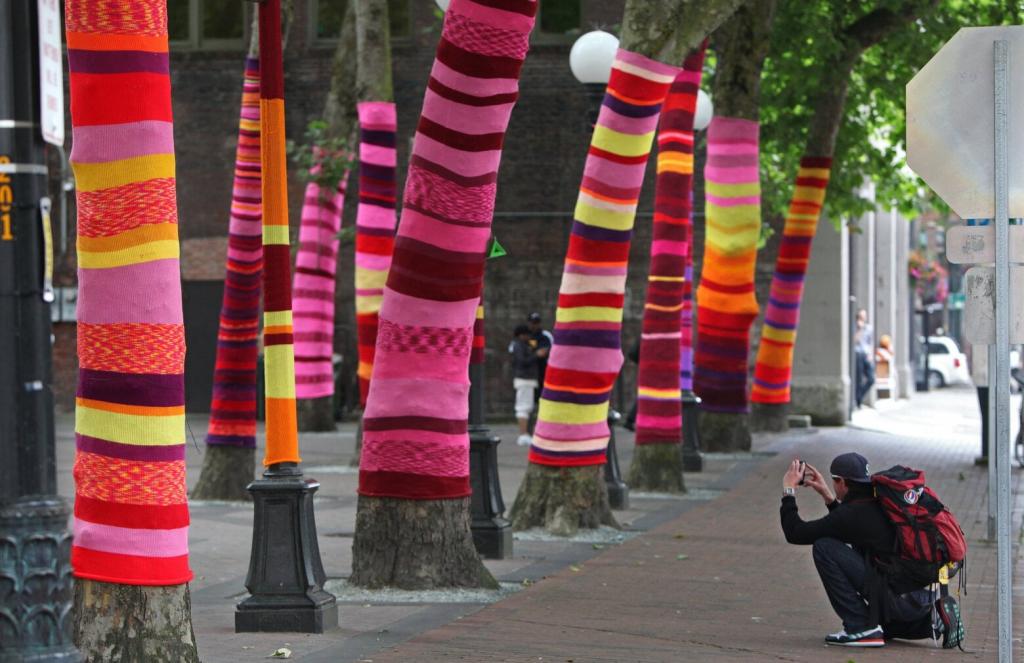
Burgas collects old clothes for an ecological art installation
“Hugged nature” reminds of the connection between environmental issues and the fashion industry
A new campaign for collecting clothes has started in Burgas, which will then be used to create an ecological art installation. The campaign runs until 15 June.
“Hugged Nature” is the name behind which a future art installation will be made with the support of the Municipality of Burgas. With this work, the young artist Bozhana Slavkova will raise questions about “fast fashion”, the felling of urban trees and forests, as well as the relationship between environmental and social issues and the fashion industry – the second largest polluter on Earth.
Nature and art connected in one
Through the artistic method of yarn-bombing, which involves dressing elements of the urban environment in specially knitted “clothes” – in this case, the trees on a main street in the seaside town.
Residents of the city and anyone else who wishes can join the initiative by sending their non-usable clothes, especially if they are colourful, to be used for this project. All colours without black are welcomed. Knitted materials will also be accepted, such as cardigans, sweaters, blankets, duvets or crocheted tablecloths. Old fabrics, yarns and ready-made knits will also be accepted.
Those who have the time can prepare yarn from old materials, which will help the initiative. The participants do not need to be from Burgas to participate in the collection of materials. But those from the city can get involved in the whole project as volunteers.
The installation is expected to be installed in Burgas on 1 July, and at the end of August the clothes will be removed from the trees.
The organizers welcome citizens to participate in the project to show concern for nature, create urban art and get rid of unnecessary old clothes. The duration of the installation may vary depending on its condition. The organizers will constantly consult with an expert opinion so as not to cause any damage to the trees.
It is not clear at this time what condition the “clothes” of the trees will be in, but if they remain in good condition, they may then be placed on trees in other cities or sent to people who wish to put them on. When their lives come to an end, the clothes will be given for recycling.
Article taken from https://www.themayor.eu/en



